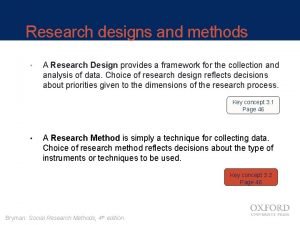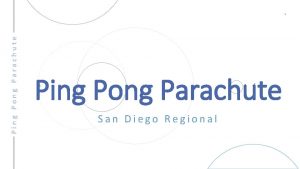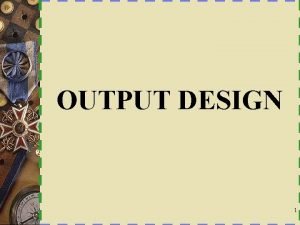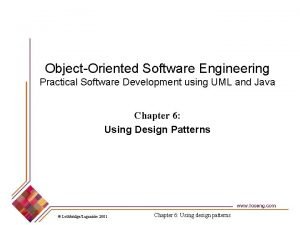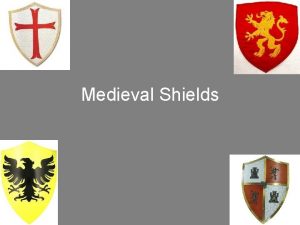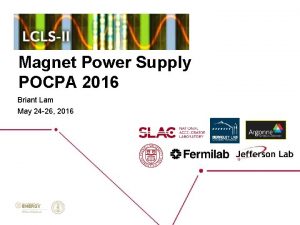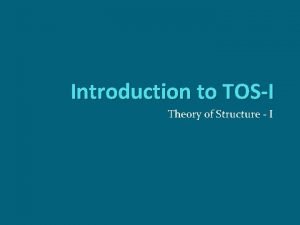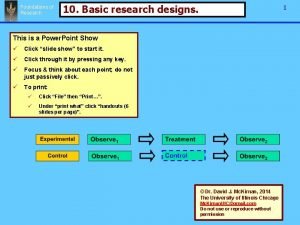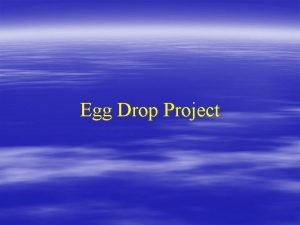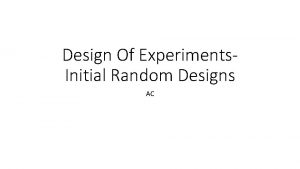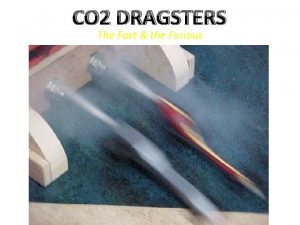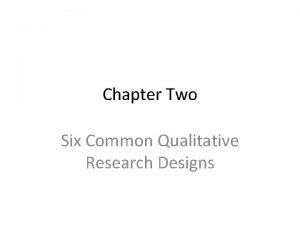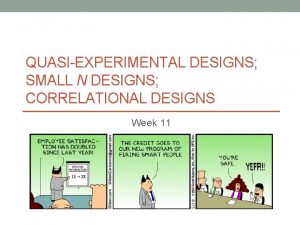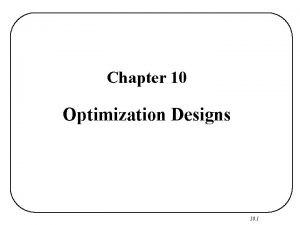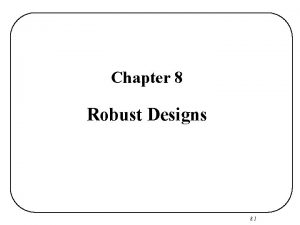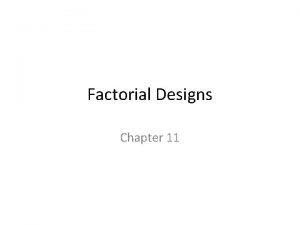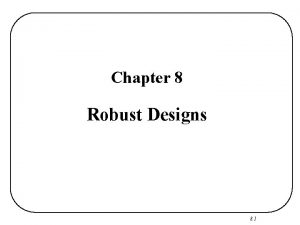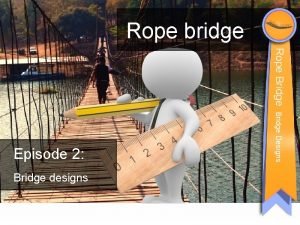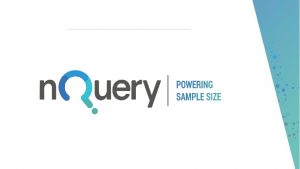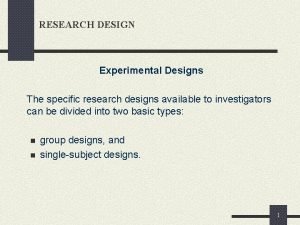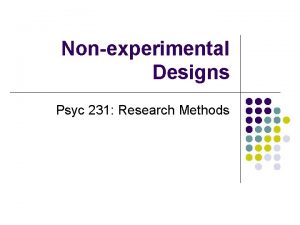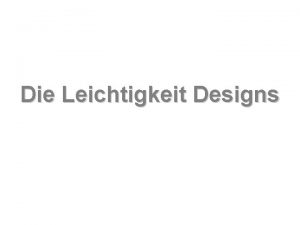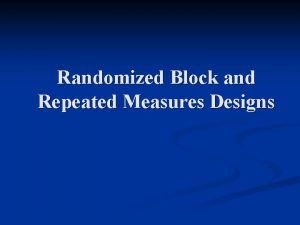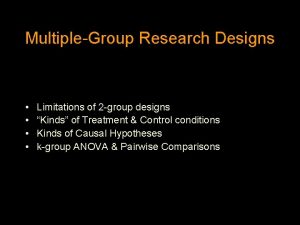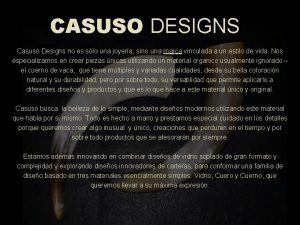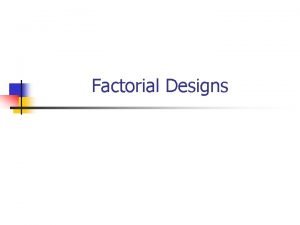Chapter 3 Project Organization Organization Designs Organization is































- Slides: 31

Chapter 3: Project Organization

Organization Designs • Organization is a social entity that has a collective goal and is linked to an external environment. • The purpose of an organization to coordinate the efforts of many to accomplish goals. • There a number of options, functional (pyramid of hierarchy), project, and matrix organization • Project Managers need to understand relative advantages and disadvantages of each

Organization Structure • Represents the management hierarchy: – Reporting relationships who report to whom – The official chain of control or authority, which deals of official activities, such firing, hiring, and promotion. • Organization can be grouped into major subdivisions on the basis of a number of frameworks. • responsibilities & type of work for each subdivision • official lines of authority & communication Informal organization also important and can exist in parallel to the official organization, communication of the informal is socially motivated.

Alternative Structures • There a number of options • Best depends on goals, type of work it supposed to do, and the environment within which it operates. • Forms of organization structures are: – Functional organization – Project organization – Matrix organization

Functional Organization This type relies on formal rules, procedures, coordinated plans, budgets, fairly common, segmented by department and their functions. works well in repetitive, stable environments

Functional org… • A functional organization is the most common type of the three. • It works best in small organizations in which the different sections are geographically close together and which provide only a small number of goods and/or services. • In a functional structure, the organization is broken into different sections based upon specialty. For example, there may be one area for sales, one for customer service and one for the supervisors who deal with escalated problems. • The project manager's role is to ensure smooth execution of processes and projects; however, the functional manager has the most power and makes the final decisions.

Types of Functional org • • Geographic Differentiation Product Differentiation Customer Differentiation Process Differentiation

Advantages of functional organization An advantage to the functional structure is the role of the functional manager, which means there is only one boss. This reduces or prevents conflicts of interest and makes it easier to manage specialists: • Clear line of authority • Career development • Comfortable and easy • Technical expertise • Flexible resource assignment

Disadvantages of functional org. A disadvantage of this type of structure is that the project manager has limited authority and a limited career path. • • No accountability over complete project No project emphasis Low coordination across function No customer focal point Low delegation of authority Work delays due to red tape Heavy politics Lack of a big picture view

Projectized Organization • Projectized organization is a project focused organizational structure where project manager has the final authority over the project to make project decisions, priorities, acquire and assign resources. • A projectized organization refers specifically to an organizational structure that has been set up in a manner in which the project manager leads the group and in which the project manager has the ultimate authority to make any and all decisions involving the organization. • In a projectized structure, all the work is looked at as a project. The project manager has complete control, unlike in the functional structure, and all team members report directly to the project manager. • Sometimes these team members are permanent, and sometimes they are hired as temporary workers to help with the project until its completion. If the organization takes on a large project, it will have all the necessary resources available to sustain the project and will act as a small, self-contained company. • The project manager works with complete autonomy (central authority, power) over the project, team is on the project full time and report to the project manager. • As a project manager, you have the responsibility to take authority, rather than waiting for someone to give you the authority.

Project Organizations (advantages and disadvantages) • Advantages to the projectized structure include the project manager's opportunity for career progression. In addition, because good communication exists within the project work, the team members tend to be more committed to, and excel in, their responsibilities. • The disadvantage of a projectized structure is that, because the team breaks up and disperses after the completion of the project, there are no long-term goals or sense of job security for the rest of the workers. Another disadvantage is that the organization has to essentially clone the same resources for each project (project manager, work area, administrator).

Comparison between organizations types There are several differences between projectized and other types of organizations: - In projectized organizations, the Project Manager has all the authority he wants, as opposed to matrix and functional organizations, where the Project Manager has no or little authority. - The Project Manager owns the resources, as opposed to matrix and functional organizations where he borrows the resources. - Resources are only allocated to projects in projectized organizations. In other types of organizations, resources report to their functional managers and usually do routine, non-project work.

More Advantages of Project organization • The main advantage of having a projectized organization is that decisions are made much faster due to shorter communication paths. • Additionally, project managers have real authority and the team is more loyal, more dedicated, and is not disturbed by the problem of "multiple managers"

Project Organizations PURE PROJECT organization involve creating a separate independent organization specifically for accomplishing a particular goal. The pure project organization is characterized by the usually great importance, the large scope, the large uncertainty, the high time pressure, the long duration and the high complexity of the project TYPES: - Project Center - Stand-Alone Project - Partial Project

Project Center - Is linked to parent organization to draw resources & personnel as needed EXAMPLES: • General Motors task force to develop suggestions for downsizing • relocation operations

Stand-Alone Project - newly created organization for this mission drawn from several organizations EXAMPLES: • large-scale public works • NASA space station development • construction joint-ventures

Partial Project - project manager responsible for some activities other activities (support-oriented such as accounting) remain with functional divisions. This is a common.

Pure Project Disadvantages - cost in personnel (facility duplication) - lose training investment - team members do not feel secure - inefficiency, no place else to use key people - high risks in early project phases.

Matrix Organization - It is used mainly in the management of large projects or product development processes, drawing employees from different functional disciplines for assignment to a team without removing them from their respective positions. - Matrix management is a type of organizational management in which people with similar skills are pooled for work assignments. - The matrix structure combines both the functional and projectized structures. Each team member has two bosses; they report both to the functional manager and the project manager. - If the matrix is strong, the power resides more with the project manager. - If the matrix is weak, the power resides more with the functional manager. - The key is to find a balance in which the power is shared equally. - Because of its complexity, this type of structure can lead to problems if it is not used carefully and properly. Good communication is essential for success.

Matrix organization

Matrix organization

Advantages of Matrix Structure Advantage to the matrix structure lies in the efficient use of resources because of ease of access. This structure also demonstrates efficient communication both vertically and horizontally. Because of this, once the projects have ended, the team members are likely to receive a job elsewhere in the organization. The advantages of a matrix include: - Individuals can be chosen according to the needs of the project. - The use of a project team which is dynamic and able to view problems in a different way as specialists have been brought together in a new environment. - Project managers are directly responsible for completing the project within a specific deadline and budget. - Required resources can be managed moving into and out of the project team - Project cost is lessened because resources are used as needed - There an appropriate focus on the project objectives through a single PM - The overall enterprise utilization of resources is better handled in the mode •

Disadvantages of Matrix • A disadvantage of the matrix structure is complexity, which can be difficult to manage. For example, if the functional manager and the project manager do not communicate well, the team members can be caught in the middle, causing confusion. The disadvantages include: - A conflict of loyalty between line managers and project managers over the allocation of resources. - Projects can be difficult to monitor if teams have a lot of independence. - Costs can be increased if more managers (ie project mangers) are created through the use of project teams.

Matrix Problems • Unclear lines of authority, Two bosses, dual reporting “No Man Can Serve Two Masters!” military principle of UNITY OF COMMAND • chaos, confusion more common • often project manager tells you what to do, but your raise comes from functional manager • Success highly depends on individuals

Matrix Capabilities • functional part provides repository for technical expertise and physical resources • when in functional home, workers keep up professionally (train) • functional homes a place to go when project over (no new job search)

Hybrid Organization • "Hybrid organizations" are those that combine three elements of people, workplace and technology in equal measure. A successful organization would be one that empowered its people to work in the way they would be most productive, allowing them to be measured by outputs – empowered through innovative and flexible workplace design and a range of technologies and tools that help them do their jobs more effectively. • "The Hybrid Organization" is a business concept created by Microsoft in 2010. Working with experts from the fields of social change, workplace design, economics, technology and public sector development. Microsoft identified several characteristics of businesses and organizations that are best placed to thrive in uncertain times.

Hybrid Forms • Firms combine matrix, functional, project features, custom design their own organization. • COST CONTROL: Project matrix best, functional worst • SCHEDULE: project best, functional worst • TECHNICAL: functional worst

Know when it’s time to leave • You have no choice about team member • Your sponsor insist that people multitask and won’t take “no” for answer. • You are supposed to contribute technically to the project • All your project starts with insufficient resources • You hear that “you’re not a team player all the time”

When you are not right for the project • You do not know enough to manage this project • Your manager inflict (impose) help on the team and you can not push back • You know too much to mange this project

Cellular organization: small work groups with people skilled in each required task were organized together. Liaisons: are used to integrate two groups not part of the same organization, useful between the people who fund the project and the project team. Task forces: Temporary grouping of individuals to solve a particular problem. Expediters (coordinators): are individuals whose jobs is to make sure that something happens, no authority but they inform the project manager of the need for additional resources. Pushes for speedy completion of work.

Summary • organization structure is means to achieve goals & respond to problems • differentiation • project organizations more flexible • need to know criteria for appropriate project organization structure
 Triangle popsicle stick bridge
Triangle popsicle stick bridge Findings of qualitative research
Findings of qualitative research Chapter 10 qualitative research designs author
Chapter 10 qualitative research designs author Characteristic of qualitative research design
Characteristic of qualitative research design Water rocket fin template
Water rocket fin template Used in transferring marks
Used in transferring marks Egyptian floral art
Egyptian floral art Rubber band racer design
Rubber band racer design Different types of research designs
Different types of research designs Turf areas in xeriscaping designs should be seeded in
Turf areas in xeriscaping designs should be seeded in Key principles of experimental design
Key principles of experimental design Premier designs hostess benefits
Premier designs hostess benefits Ping pong parachute launcher
Ping pong parachute launcher What is output design
What is output design Abstraction-occurrence design pattern
Abstraction-occurrence design pattern Medieval shield designs
Medieval shield designs Caylua designs
Caylua designs Triangular arch
Triangular arch Pure romance party invite
Pure romance party invite Hopewell designs
Hopewell designs Empire period floral design
Empire period floral design Bracketing and matrixing designs for stability testing
Bracketing and matrixing designs for stability testing Basic research designs
Basic research designs Within-subject design example
Within-subject design example What is matched pairs design
What is matched pairs design The egg drop project fairview
The egg drop project fairview Channel design decisions example
Channel design decisions example Random designs
Random designs Fftooo
Fftooo Fast dragster designs
Fast dragster designs Dragster car designs
Dragster car designs Types of qualitative designs
Types of qualitative designs








